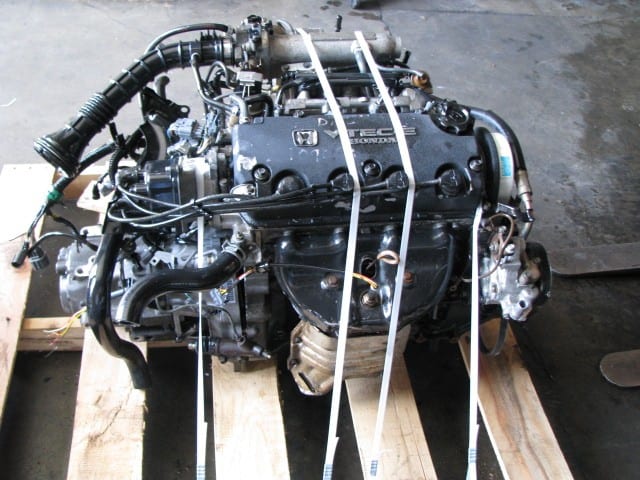Shipping engines involves dealing with their size and weight, necessitating careful consideration

When it comes to shipping engines, opting for pallet shipping emerges is the most economical solution. The engine or gearbox is securely fastened to the pallet and subsequently dispatched to its intended destination through a reliable courier service. While this approach may seem straightforward, shipping engines demands adherence to specific requisites for a seamless process. Special attention is required to comply with rules and regulations established to safeguard both the driver and the package, as well as to meet environmental standards. Ensuring compliance with shipping regulations, especially for used engines, is imperative.
- Before initiating the shipping process, all fluids must be drained from the engine/gearbox. This precautionary step is crucial to prevent any potential oil leakage that could pose risks to other cargo, vehicles, or equipment.
- Securing the engine or gearbox on the pallet is a pivotal safety measure that must be strictly adhered to.
- During the collection of the engine or gearbox, the driver conducts an inspection of the oil level. If any traces of oil are detected within the engine, the processing cannot proceed.
- To mitigate the risk of oil or fluid leakage onto the delivery truck, it is advisable to place padding, rags, or other oil-resistant material over the pallet before positioning the engine. Taking preventive measures against possible leaks is paramount.
- For engines with uneven sumps, an old tire can be employed to balance the engine and provide support to the sump area. In cases where the engine lies flat on the pallet, the use of a tyre is unnecessary.
- Securing the engine to the pallet is accomplished through the utilization of a ratchet strap or well-padded steel or plastic banding. It is essential to ensure that the banding does not snag or chafe against the engine by placing rags between them.
- Plastic machine straps are fine with a minimum requirement of four tightly fastened straps.
- Rope, shrink wrap, or similar materials are discouraged as they may stretch or break during transit. Only ratchet straps or machine straps are deemed acceptable for this purpose.
- If shrink wrap is used over the strapping or engine, it is imperative to create a hole for dipstick access, as required. The strap or band should remain visible through the shrink wrap, and the use of black shrink wrap is discouraged.
Under the guidelines outlined in Paragraph 223 of the Health and Safety Executive's Workplace Transport Safety Guide, the driver reserves the right to refuse the collection of the engine if the specified shipping regulations are not adhered to.